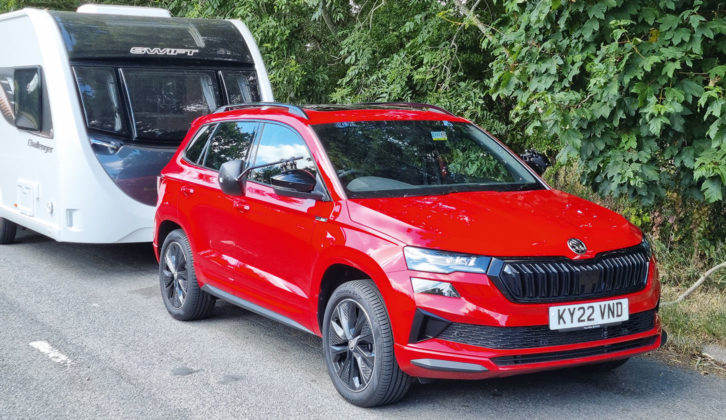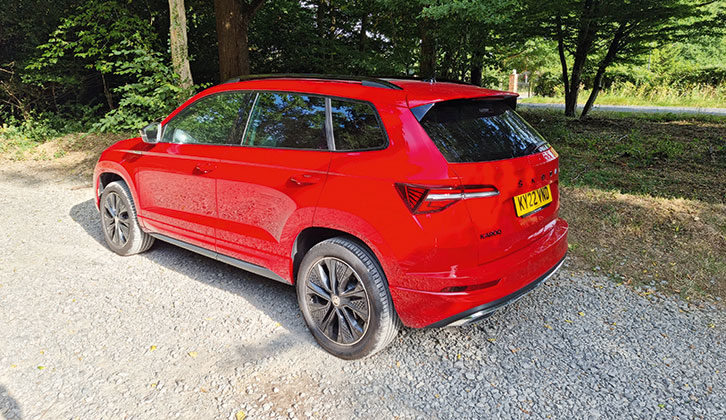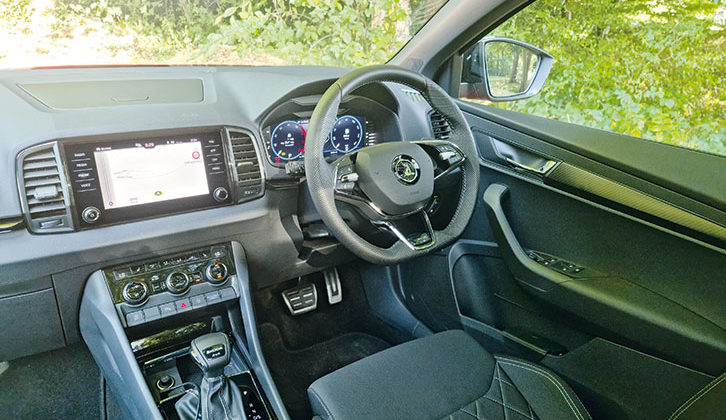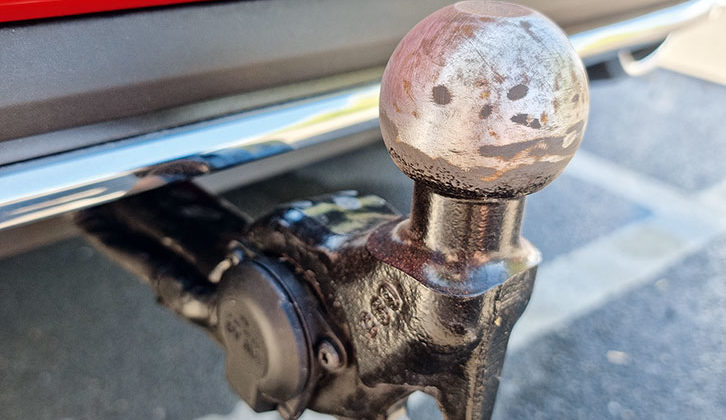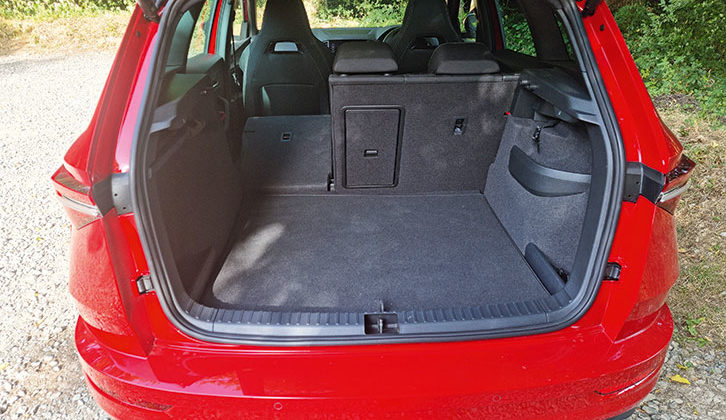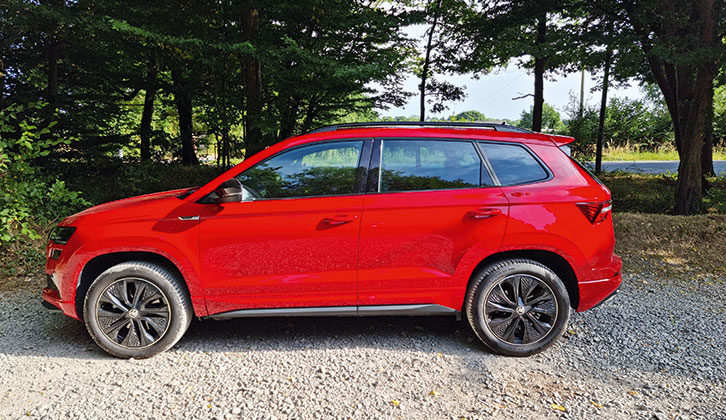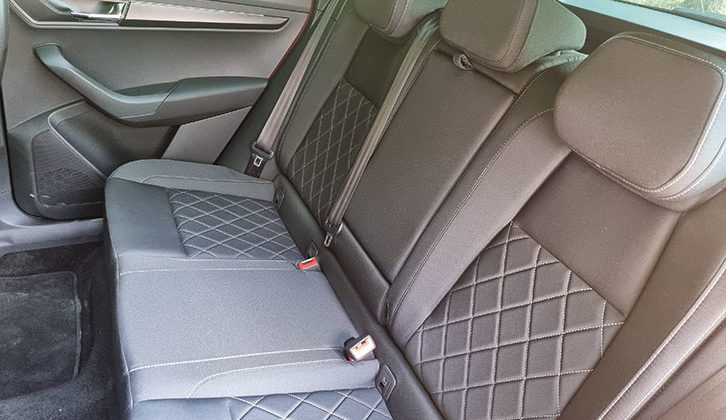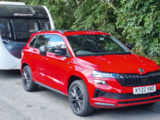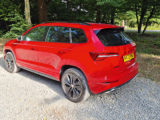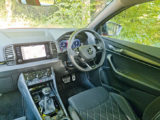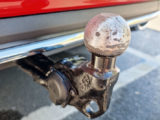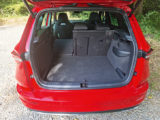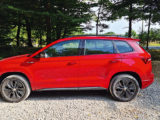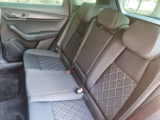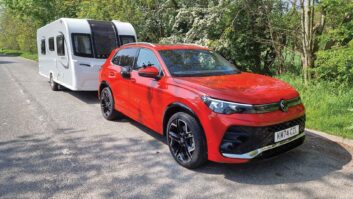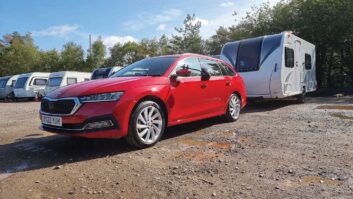Škoda has given the Karoq family SUV some midlife updates. As well as tweaks to the styling front and rear, the refreshed model has more equipment as standard, including matrix LED headlights. The engines have been fine-tuned for lower emissions and better fuel economy.
Unlike many of the Karoq’s rivals, the Škoda still relies on conventional petrol and diesel engines, rather than hybrid or plug-in hybrid power (see our guide to the best plug-in hybrid tow cars if you’re looking for one). We’re testing the more powerful diesel in range-topping Sportline specification, with four-wheel drive and an automatic gearbox.
The Škoda Karoq line-up starts from £26,255, rising to £38,515 for the high-spec diesel that we’ve been driving.
What are we looking for?
Škoda’s changes to the Karoq seem minor when newer rivals offer more advanced electrified engines, so are the changes enough to keep the Sportline at the sharp end of a very competitive class?
Towing ability of the Škoda Karoq
The Škoda Karoq range starts with a 110hp petrol, with 150hp and 190hp engines being the other options if you prefer to fill up with unleaded. Diesel buyers have a choice of 116hp and 150hp engines. Most versions are front-wheel drive, although the 190hp petrol sends power to all four wheels, and 150hp diesel buyers also have a choice of front- and four-wheel-drive models.
The 150hp diesel 4×4 is the heaviest model in the line-up. Škoda quotes a range of kerbweights, from 1656kg to 1805kg (including 75kg for the driver).
Taking a cautious approach and using the lighter figure, the Karoq has an 85% match weight of 1408kg. As most readers will know, both major caravanning clubs recommend towing a caravan weighing no more than 85% of the kerbweight of the tow car, especially if you are new to towing.
We matched the Škoda Karoq to a Swift Challenger 530 with a MiRO of 1330kg, borrowed from Broad Lane Leisure.
Some vehicles just feel at home with a caravan behind them, and the Karoq is one of them. It feels stable and in control on all types of road, one of the factors that saw us include it in our best 4×4 for towing a caravan guide.
Accurate steering helps the driver place car and caravan precisely, and on lumpy backroads, the suspension delivers comfort and composure. It’s not too firm, not too soft, but strikes a near-ideal compromise.
Hill starts are simple. The electronic parking brake stops car and van still, even on a steep gradient. The brake releases smoothly as the driver applies the throttle, and the Škoda will tow to the top of a 1-in-6 slope with no sign of strain.
Head out onto the motorway and the Karoq is every bit as impressive. It tows like a ¾-scale big 4×4, with the same sense of security you get from two-tonne SUVs with price tags almost double the Škoda’s. Even when overtaking HGVs, there’s almost no movement from the caravan, and rarely any need for the slightest steering correction.
The 2.0-litre diesel engine is well suited to towing. We’ve lost track of the number of times we’ve towed with VW Group cars fitted with this engine in various states of tune. It simply gets on with the job, thanks to plenty of pulling power delivered from low revs. You don’t need to work the engine hard, because it’s so strong in the bottom half of its rev range.
Arrive at your destination and the Karoq is easy to manoeuvre. The DSG auto creeps smoothly, so you can edge towards the caravan at a snail’s pace when hitching up. A rear-view camera is standard, which really helps to guide the towball directly under the hitch.
The towball and electrics cost £1090, which is quite pricey. It’s a well-designed installation, though, with the electrics on the side of the towbar, clear of the bumper.
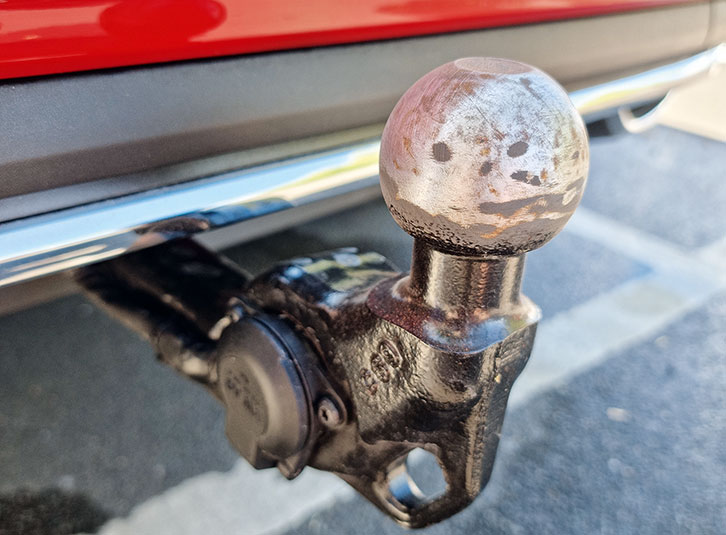
If you decide to fit a cheaper, third-party towball and electrics, keep in mind that the car will need to be ordered with towball preparation from the factory (£225), or it won’t be possible to fit a towball later.
Solo driving
Despite the Sportline name, the Karoq isn’t as sporty to drive as the Seat Ateca. It leans a little more in corners and feels a tad less agile than the Spanish car. Otherwise, the Škoda makes a very capable all-rounder.
Sportline models are on 19-inch alloys, which make the ride slightly firmer than if you choose a Karoq with smaller alloys and taller tyres. This is still a very comfortable car, though, with a smoother ride than the Ateca. It improves as speeds rise, making the Karoq an excellent motorway vehicle.
The diesel engine has the punch to increase speed quickly when changing lanes, and the suspension copes well with expansion joints and changes of surface.
The Drive Mode Select feature allows the driver to choose different settings for the throttle, gearbox and steering. Normal is the default setting and works fine for most situations, although the Sport mode adds welcome weight to the steering and more urgency to the throttle response.
Eco softens the vehicle’s responses and minimises the power consumed by the air-con, for better fuel efficiency.
You can also add adaptive suspension as an option for £995, which allows the driver to tailor the damping for a sportier or more comfortable ride. But when the standard set-up is so well judged, we wouldn’t rush to spend more.
The Karoq is a spacious and roomy car, but quite short at under 4.4m. That helps make it easy to thread through city streets or squeeze into small parking spots.
Space and practicality
There’s plenty of space in the Karoq, although one of the interior’s most useful features isn’t available if you choose the Sportline version.
The driver and front-seat passenger have plenty of room, and there’s lots of adjustment to the seat and steering wheel. You sit quite high with a good view out – one of the reasons many of us choose an SUV, even if we have no intention of offroading.
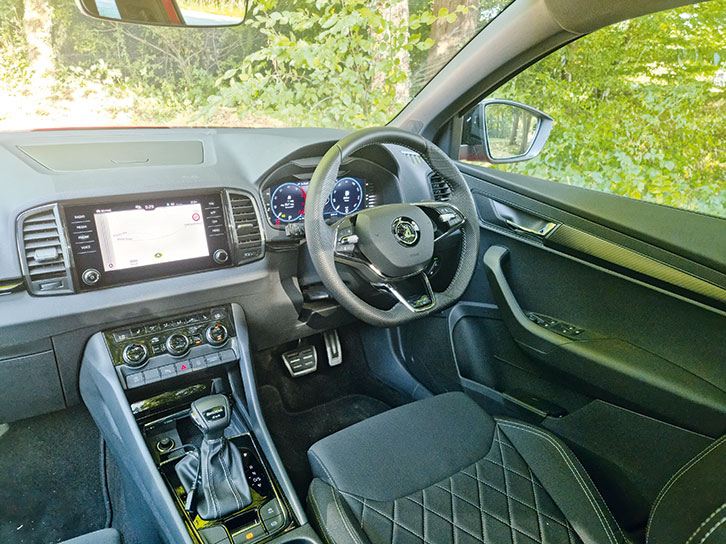
The Sportline’s front seats are more heavily bolstered than those in the other models, which helps to hold you in place when cornering. However, if you tend to drive at a sedate pace, you might prefer the more open shape of the seats in the SE Drive and SE L models.
Infotainment is taken care of by an eight-inch screen, which has shortcut buttons to one side to make finding the right menu easy. The physical buttons and rotary controls for the air conditioning are less distracting than a touchscreen menu.
The rear seats provide good headroom, even with the panoramic sunroof fitted to the Sportline model. Legroom is generous, so lanky teenagers should be able to travel in the back with no complaints.
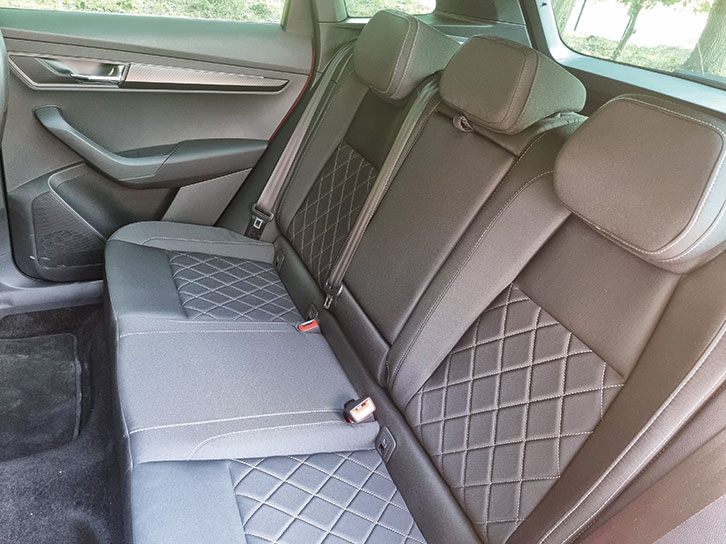
It’s a shame the VarioFlex rear seats aren’t available on Sportline cars. These slide back and forth to trade legroom and luggage space. There are three separate seats, and they can be folded individually or removed to maximise luggage capacity.
The system is standard on SE L cars and an option on SE Drive. Sportline has regular 60/40 split rear seats instead.
Boot space is generous, with 521 litres with the seats upright and 1630 once they are folded.
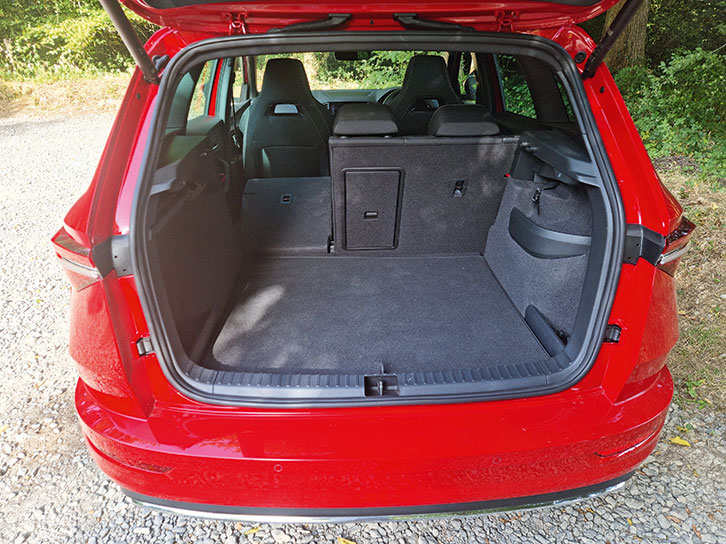
Buying and owning a Škoda Karoq
The range-topping Sportline costs £38,515, but according to What Car? magazine you should be able to save almost £2000 by haggling. Even so, that’s quite a stiff price for a car of this size. The SE L model is better value, with a list price of £35,080.
The Sportline does have an electrically operated boot and a ‘virtual pedal’ for opening it when your hands are full, but otherwise, most of the vehicle’s upgrades are cosmetic.
Either way, fuel economy of just under 50mpg is possible according to official tests, and we found that pretty accurate in our testing. While towing, the car returned 29mpg.
The Karoq earned a five-star safety rating from Euro NCAP when tested in 2017.
Verdict
The Škoda Karoq is a great all-rounder. In fact, we’re so impressed, it’s a car we’d spend our own money on.
However, if we were to get our chequebook out, we’d choose the SE L, rather than the Sportline. Not only is it significantly cheaper, but it also comes with the clever VarioFlex seats as standard. They’re not even an option on the Sportline.
In SE L spec, this is a five-star car. In Sportline spec, the Karoq seems like a rather strait-laced friend who has reluctantly accepted a funky makeover. Even so, aside from the lack of VarioFlex seating, this is still an extremely capable and practical family SUV.
Most importantly, it’s great to tow with. It has traits commonly seen in one of the best tow cars – the engine pulls strongly and seems ideally suited to towing duties, while the Karoq’s stability reminds us of a bigger and heavier car. The four-wheel-drive system would come into its own in bad weather.
The Škoda is easy to live with from day to day, too. Although not a sporty car, it handles well on a twisty road, and rides comfortably. It’s at its best on A-roads and motorways, covering long distances with quiet poise and returning excellent fuel economy.
It’s safe, with a five-star rating from Euro NCAP, and driver aids such as autonomous emergency braking as standard. If we didn’t know Škoda made a cheaper, more practical version of the same car, we’d be full of praise for the generous boot and cabin. So the Karoq is highly recommended, but even more so in SE L spec.
Perfect partner
With 85% of the Karoq’s kerbweight at 1408kg, you can safely tow an Xplore 585.
In detail:
- Price: £38,515
- What Car? Target Price: £36,838
- Retained value after three years: 48%
- Kerbweight: 1656kg
- 85% of kerbweight: 1408kg
- Gross vehicle weight: 2240kg
- Max towing limit: 2100kg
- Gross train weight: 3340kg
- Towball limit: 90kg
- Price of towball and electrics: £1090
- Boot size min/max: 521/1630 litres
- Payload: 584kg
- Test conditions: Dry
- Engine size: 1984cc
- Official combined economy: 47.9-48.7mpg
- Towing economy: 29mpg
- Power (hp)/rpm: 150/3500-4000
- Torque (lb ft)/rpm: 266/1750-3000
- CO2 emissions: 151-154g/km
- First year car tax: £585
- Second year car tax: £165
- Insurance group: 21E
Or you could try:
Seat Ateca 2.0 TDI Xperience Lux 4Drive
- Price: £37,835
Similar to the Karoq, but sportier to drive and slightly cheaper.
Hyundai Tucson 1.6 T-GDi Hybrid 4WD Ultimate
- Price: From £38,310
Capable and well equipped if you prefer hybrid to diesel power.
Volvo XC40 D3 Momentum
- 68-plate, 47,000 miles
- Price: £18,400
The Volvo XC40 drives well and makes a stable tow car with a classy cabin.
BMW X3 20d SE
- 68-plate, 33,000 miles
- Price: £24,400
A very stable tow car, and great to drive every day, too.
You can also check out our recent reviews of the following:
- Kia Sportage 1.6 T-GDI HEV AWD GT-Line S Auto: We think this makes a very capable towing vehicle, providing stability and good every day driving.
- Vauxhall Grandland 1.5 Turbo D 130PS Ultimate Auto: This SUV is economical on fuel and provides some good stability.
If you’ve enjoyed reading this article, why not get the latest news, reviews and features delivered direct to your door or inbox every month. Take advantage of our brilliant Practical Caravan magazine SUBSCRIBERS’ OFFER and SIGN UP TO OUR NEWSLETTER for regular weekly updates on all things caravan related.
Technical Specifications
| Engine Size | 1984 cc |
| Kerbweight | 1656 kg |
| 85% KW | 1408 kg |
| Towball Limit | 90 kg |
| Maximum Towing Limit | 2100 kg |
| Power | 150 bhp |
| Torque | 266 lb ft |
| Offical MPG | 47.9-48.7 mpg |
| Towing MPG | 29 mpg |
| CO₂ | 151-154 g/km |
